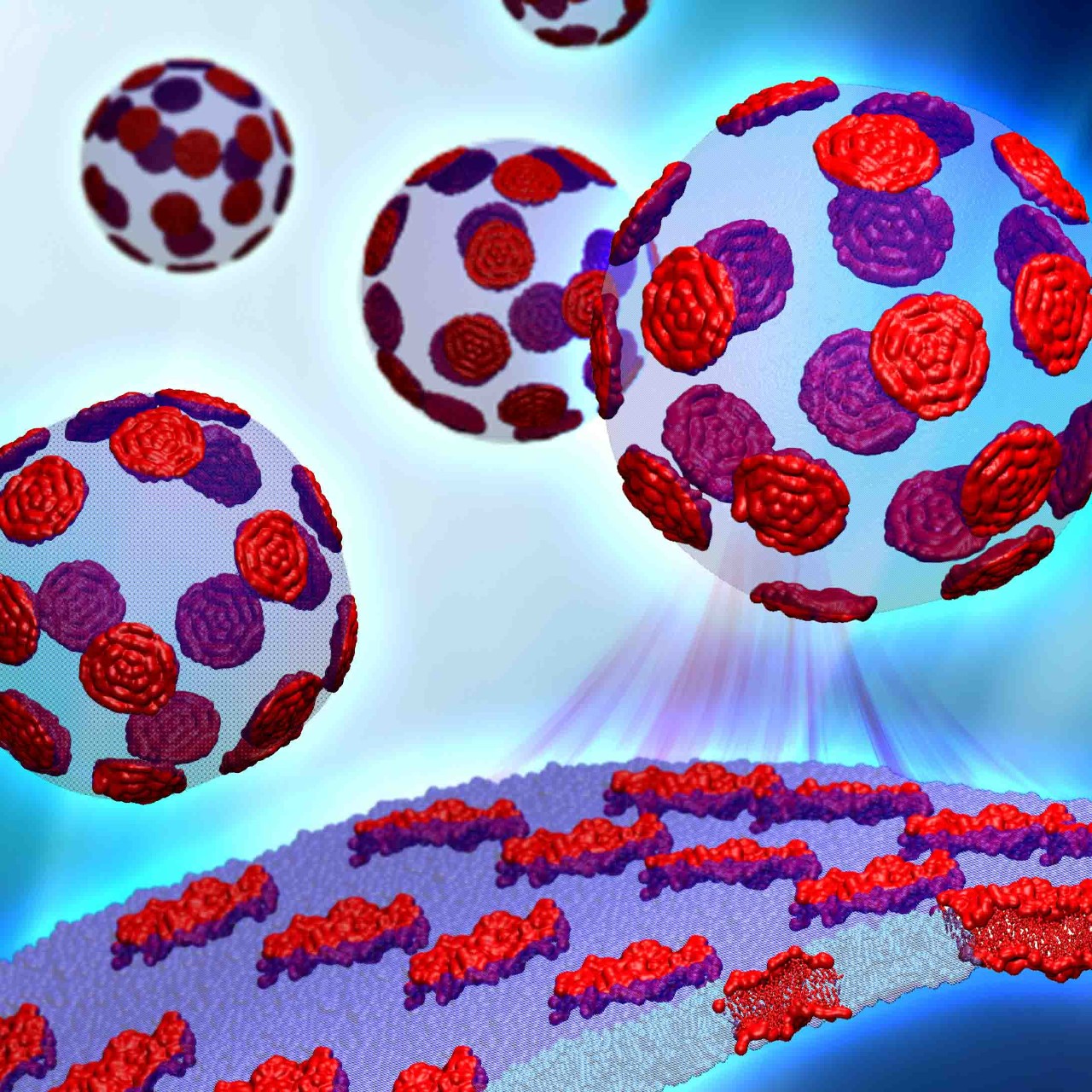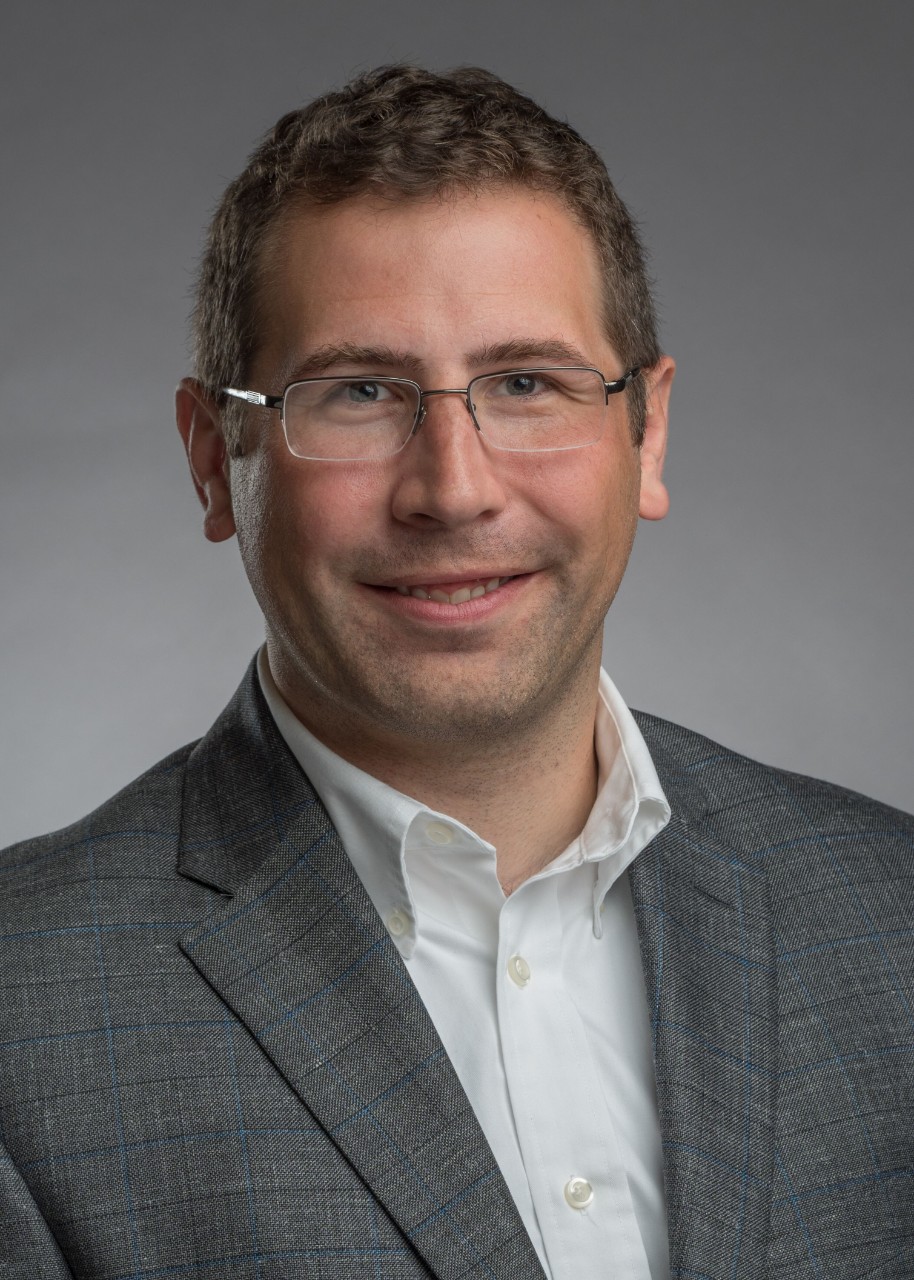
UC professor organizes the roles of cell membranes

UC assistant professor Jonathan Nickels recently published work suggesting that lipid rafts can play a role in buffering the physical properties of cell membranes.
Cells have to be resilient to stay alive. A researcher at the University of Cincinnati is studying how one part of the cell membrane can help with this survival.
UC assistant professor Jonathan Nickels and an international team of collaborators recently published a paper supporting their hypothesis that lipid rafts, small patches of lipids and proteins within cell membranes, can help maintain a membrane’s structure against changes in the environment. The work appeared as the cover story in the Journal of Physical Chemistry.
Nickels’ research in cell membranes reflects the innovation agenda platform of UC’s strategic direction, Next Lives Here.
Traditionally, people are taught that cell membranes are a lipid bilayer with a random mixture of proteins, Nickels said. Many scientists, however, now believe that proteins within cell membranes actually organize with the help of platforms called lipid rafts.
Proteins cluster together on these rafts, which allow the proteins to find their binding partners faster. When that happens, the proteins can carry out the cell membrane’s functions better, like transmitting signals to and from the cell.
But that’s not all these rafts do, according to Nickels.
“We suggest that these lipid rafts can play a role in buffering the physical properties of the membrane,” Nickels said. “This buffering is potentially advantageous for a cell in a rapidly changing environment.”
Nickels and coworkers ran experiments on a model of a cell membrane that tested the model against environmental changes, like temperature. The results showed that lipid rafts could maintain the cell membrane’s physical properties, like thickness, fluidity and flexiblity, within a change of 15 degrees Celsius.
These results show that lipid rafts, a relatively new idea in biological science, may actually be inherent to the cell’s survival. Nickels’ research can provide more answers on the workings of cells and, in turn, the broader workings of the living world.
Featured image at top: Small patches of lipids and proteins within cell membranes, called lipid rafts, can help maintain a membrane’s structure against changes in the environment. Image/ORNL/Genevieve Martin, with acknowledgment to Barmak Mostofian for original renderings.
Next Lives Here
Research into cell membranes can provide answers on the workings of the living world. UC is continues to drive innovation forward through its strategic direction, Next Lives Here.
Related Stories
Upstream river flooding becoming more common
January 3, 2025
WVXU talks to UC Assistant Professor Dongmei Feng about her new study in Nature examining water flow in the world's rivers. She found that flooding is becoming more common in upstream sections of rivers.
Engineering alumnus honored for impact in tech industry
January 3, 2025
With more than 40 years of experience in technical computing, enterprise software, and engineering simulation, University of Cincinnati alumnus Jim Cashman’s career has spanned leadership roles at the forefront of the tech industry. During his 22-year tenure at ANSYS, including 16 years as CEO, he grew the company into the global leader in engineering simulation software, and helped organizations from Tesla to NASA innovate through virtual prototypes. Cashman was honored with the 2024 Lifetime Achievement Award by the UC Alumni Association and the College of Engineering and Applied Science.
New platform connects biotech innovators with market opportunity
January 3, 2025
Exit Lab brought together leading biotech innovators focused on wearable biosensors to showcase their devices and help them either enter the market or license their technologies.
